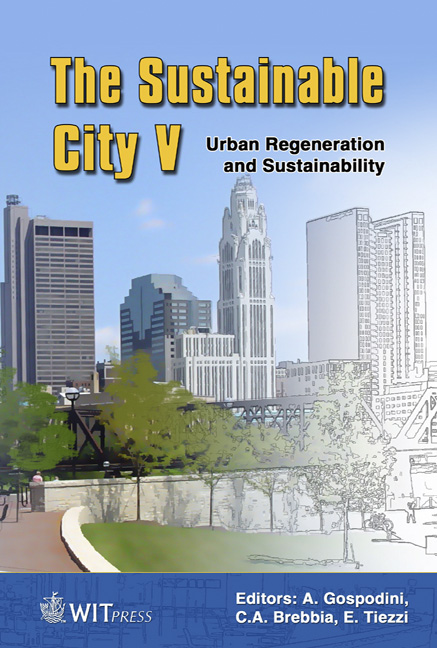Intelligent Urban Environments: Towards E-inclusion Of The Disabled And The Aged In The Design Of A Sustainable City Of The Future. A South African Example
Price
Free (open access)
Transaction
Volume
117
Pages
11
Page Range
537 - 547
Published
2008
Size
1,074 kb
Paper DOI
10.2495/SC080511
Copyright
WIT Press
Author(s)
E. V. Macagnano
Abstract
City sustainability can only be achieved through full integration of all its citizens in city life, in particular the aged and people with disabilities. Why? In every modern society they represent up to 20% of the population. Their number is now increasing due to medical advances, causing an increasing economic burden on society. Yet they have the right to dignity, socio-economic opportunities, inclusion and participation to socio economic development and opportunities. An extended working life and independent access to city resources would reduce such problems. This Paper describes comprehensive research undertaken in Pretoria, South Africa proposing substantial changes to commonly accepted city environments (in relation to urban design, infrastructure provision and utilization of services) into ‘Intelligent Enabling Environments’, where disabled and aged people would be provided with user-friendly wearable computing devices, connected to a wireless, distributed and invisible two/multi-way data transmission system, able to allow access ‘on-the-go’ of useful data related to buildings, urban infrastructure and services, and to transmit also user’s personal data. Data would include information on public buildings (location, accessibility, services provided), events, accessible city routes, info on public transport and relevant navigational data. Users would be automatically 3D tracked and the display of information would be’ hands-free’ and embedded in flexible wearable devices in personal clothing, or as part of miniaturized head-mounted-devices, customized to provide also audible information in multiple languages. Information would be accessed through interactive menus, designed around users’ life-styles, activities, education and valid both in a first and a third-world urban design context; it would be transmitted and received within enabled ‘smart buildings’ and also through an urban wireless system, via satellite and/or hot-spots. The design of future cities would be affected, revolutionized and made more effective, therefore sustainable. This paper explores the research methodology followed and the results obtained. The project has embraced current research on innovative futuristic technologies and focuses on a ‘Technology Demonstrator’ executed in a city block in the city of Pretoria.
Keywords





